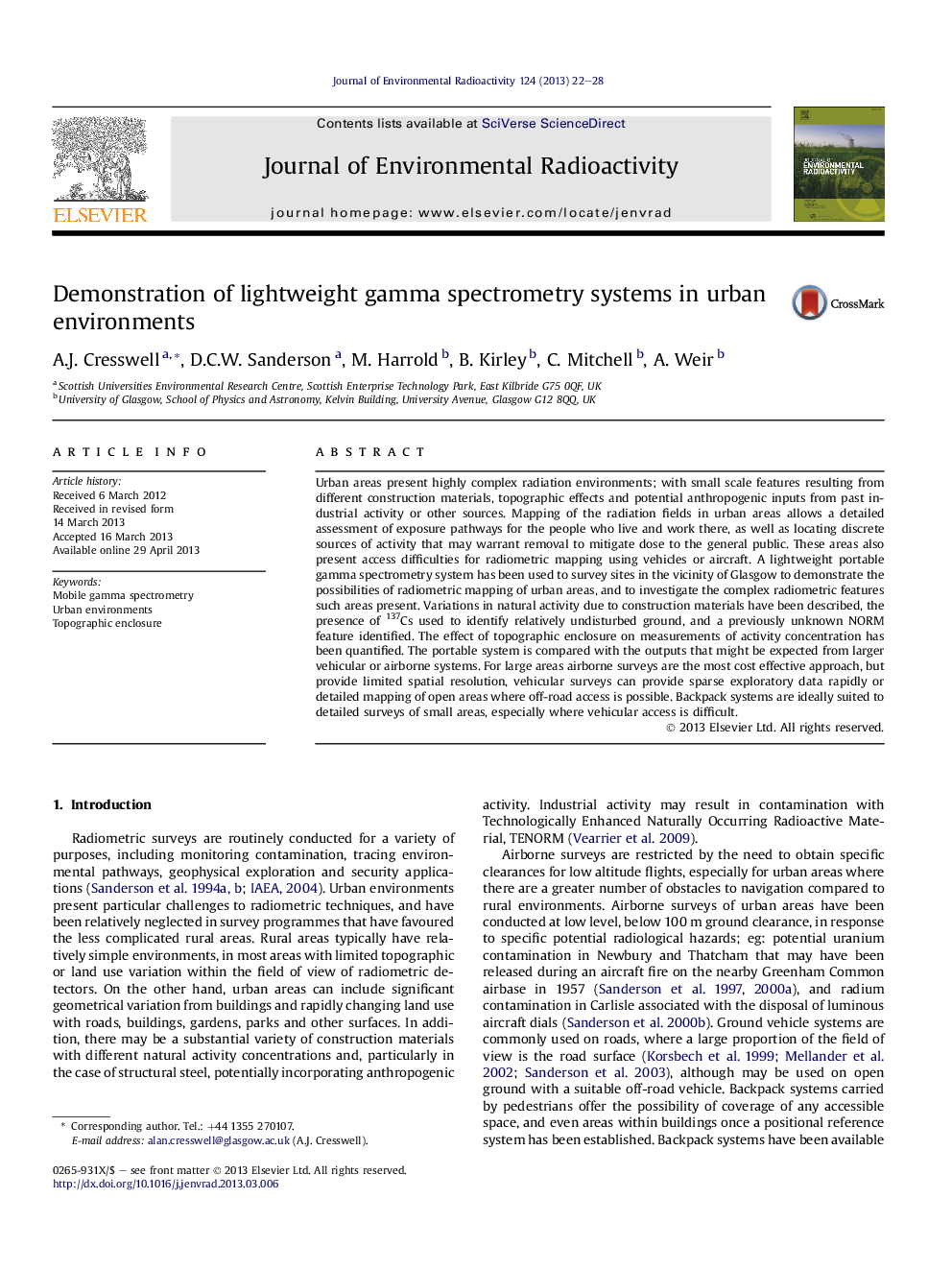| Article ID | Journal | Published Year | Pages | File Type |
|---|---|---|---|---|
| 1738170 | Journal of Environmental Radioactivity | 2013 | 7 Pages |
Abstract
Urban areas present highly complex radiation environments; with small scale features resulting from different construction materials, topographic effects and potential anthropogenic inputs from past industrial activity or other sources. Mapping of the radiation fields in urban areas allows a detailed assessment of exposure pathways for the people who live and work there, as well as locating discrete sources of activity that may warrant removal to mitigate dose to the general public. These areas also present access difficulties for radiometric mapping using vehicles or aircraft. A lightweight portable gamma spectrometry system has been used to survey sites in the vicinity of Glasgow to demonstrate the possibilities of radiometric mapping of urban areas, and to investigate the complex radiometric features such areas present. Variations in natural activity due to construction materials have been described, the presence of 137Cs used to identify relatively undisturbed ground, and a previously unknown NORM feature identified. The effect of topographic enclosure on measurements of activity concentration has been quantified. The portable system is compared with the outputs that might be expected from larger vehicular or airborne systems. For large areas airborne surveys are the most cost effective approach, but provide limited spatial resolution, vehicular surveys can provide sparse exploratory data rapidly or detailed mapping of open areas where off-road access is possible. Backpack systems are ideally suited to detailed surveys of small areas, especially where vehicular access is difficult.
Keywords
Related Topics
Physical Sciences and Engineering
Energy
Nuclear Energy and Engineering
Authors
A.J. Cresswell, D.C.W. Sanderson, M. Harrold, B. Kirley, C. Mitchell, A. Weir,
